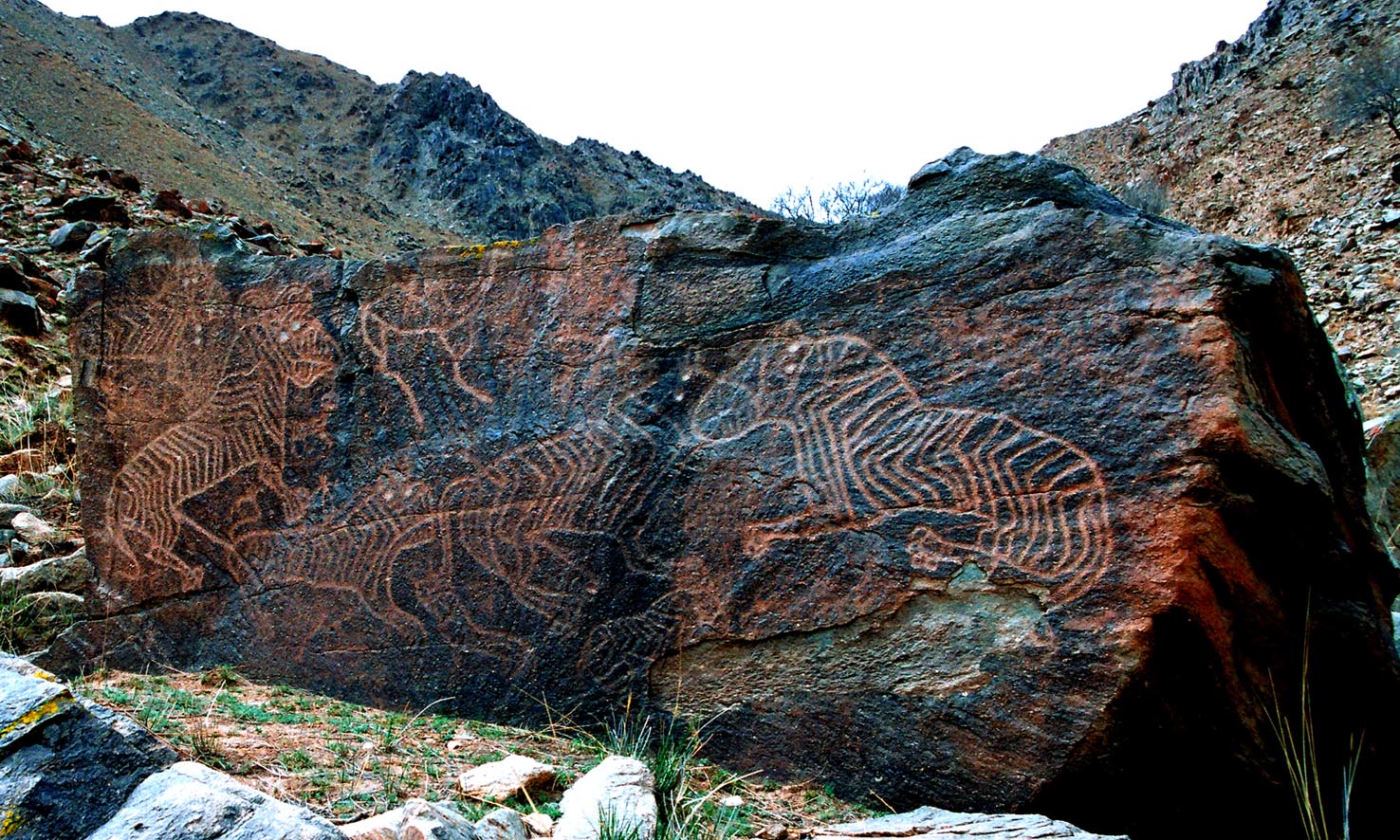Yinshan Mountain rock paintings depict nomadic lives

The Yinshan Mountains rock paintings contain patterns of animals and a number of symbols depicting the lives of ancient hunter-gatherer tribes.
Ancient rock paintings, or petroglyphs, are a significant part of prairie culture. In the vast Inner Mongolia Autonomous Region, rock paintings are scattered from east to west in the Greater Khingan Mountains, Xinlingol Grassland, Yinshan Mountains, Ulanqab and Alxa. The rock art, stretching thousands of kilometers in Inner Mongolia, is a true portrayal of ancient prairie life, including hunting, grazing, fighting battles and holding sacrificial ceremonies. Rock paintings represent precious cultural heritage and meticulously record the history of ancient northern nomadic Chinese continuously driving grassland civilization forward.
Among the rock art, the Yinshan Mountains rock paintings are known for their varied subject material. They contain patterns of animals, figures, and a number of symbols and marks depicting people’s hunting, riding, grazing, and dancing habits along with depictions of their martial skill. They also depict the sun, moon and stars. Experts indicate that in the 5th century, Li Daoyuan, a geographer in the Northern Wei Dynasty, discovered the Yinshan Mountain rock paintings and wrote down his discovery in the work Commentary on the Water Classics. The Yinshan Mountain rock paintings have exquisite artistry and the carving method utilizes line cutting techniques. There are only a few rock paintings in the world that can be compared with the Yinshan Mountain rock paintings.
Among the valleys and cliffs of the Yinshan Mountains, 153 groups of ancient rock paintings have been discovered. Of these, 19 are very dense clusters of rock paintings. The Yinshan Mountain rock paintings can be traced back 10,000 years, going through 10 periods--the late Paleolithic age, the Neolithic age, the bronze age, the Warring States period, the Qin and Han dynasties, the Northern and Southern Dynasties, the Sui and Tang dynasties, the Western Xia regime, the Yuan Dynasty and the Ming and Qing dynasties. They truly reflect ancient northern nomadic people’s methods of production, lives, customs, religions, natural environment and social landscape.
The Yinshan Mountain rock paintings have significant scientific, historical and academic value. In 2006, the Yinshan Mountain rock paintings became a key cultural relic site under state protection. In 2012, the rock paintings were listed on China’s tentative list for UNESCO world heritage.
